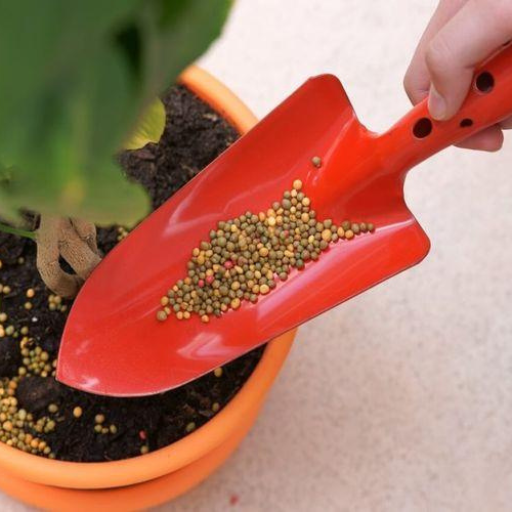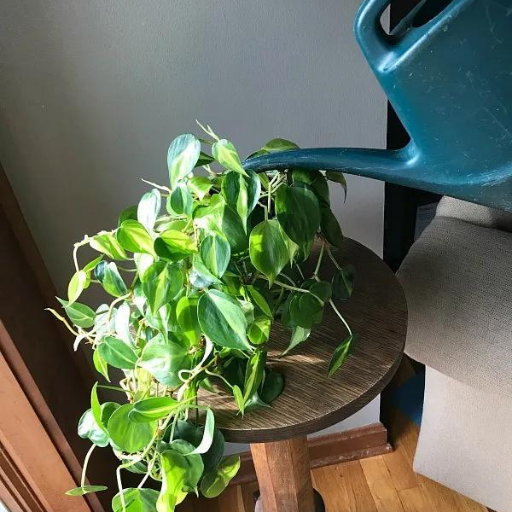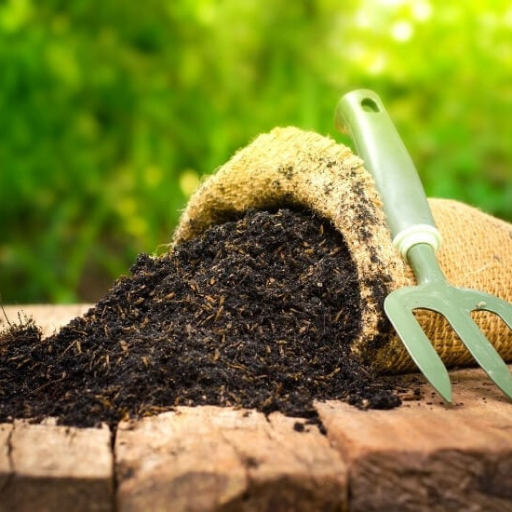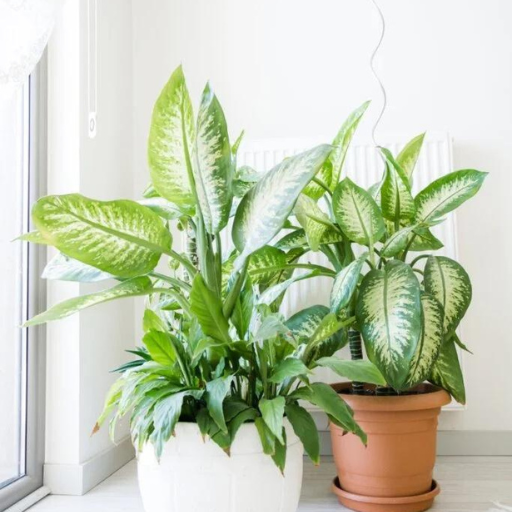Indoor plants can be a beautiful and calming addition to any home, but keeping them healthy requires proper care and nourishment. In this blog, we will explore the best organic fertilizers for houseplants, highlighting natural options that are both effective and environmentally friendly. By focusing on organic fertilizers, we aim to provide you with solutions that avoid harmful chemicals and promote sustainable gardening practices. Whether you are a seasoned plant enthusiast or just beginning your indoor gardening journey, our comprehensive guide will help you understand the benefits of using natural fertilizers and how to choose the best ones for your indoor plants.
Why Use Organic Fertilizer for Houseplants?

What are the advantages of using organic fertilizers?
Availability of various benefits can be realized by usage of organic fertilizer for indoor plants. The first is that they offer steady release mechanism for nutrients that make the nourishment process continue evenly. This helps in formation of strong root systems and healthier leaves. More so, organic fertilizers also can enhance the soil structure and microbial activities leading to a better growing medium. They are also environmentally friendly, thereby reducing chemical runoff risks and preventing pollution. By going organic, you support sustainable methods and reduce reliance on artificial chemicals which has a positive effect on both your plants and our world.
How does the use of organic fertilizer affect indoor plant health?
The use of this type of fertilizer enhances soil biologic effect, which helps plants have more stronger roots taking up much more nutrients from them. Organic fertilizers provide essential nutrients obtained from natural sources that help maintain optimum pH levels in soil hence promoting vigorous plant growth. Besides, utilizing organic fertilizer encourages growth of beneficial microorganisms in soil enhancing the decomposition of organic matter and nutrient cycling. As a result, such indoor plants become vibrant resilient with respect to diseases and stress factors.
Are there any disadvantages to using organic fertilizer?
While there are many advantages to using organic fertilizers, there are also some drawbacks as well. Firstly, they usually take long to release their nutrients when compared to synthetic manures; this might not give rapid results for plants requiring quick nutrient supplementation. Secondly, it is difficult managing precise nutrient levels since amounts contained in these manures may vary often or be inconsistent over time due environmental factors affecting them during manufacturing process such as temperature fluctuations or moisture content changes resulting into unpredictable nitrogen contents especially. Finally but most importantly they smell really bad if odor control measures are not put place thus making them attract pests characterized by their strong scent like flies among others. However, these disadvantages are always outweighed by long-term advantages and ecological benefits associated with their utilization over other alternatives.
What Types of Organic Houseplant Fertilizers Are Available?
Explaining Different types of granular and slow-release options
Granular fertilizers, on the other hand, are granules that can be dried, solidly sprinkled on the soil and break down gradually to release nutrients over time. They can easily be applied and mixed into potting soil when planting or as a top dressing. This kind of fertilizer is good for providing an even supply of nourishment for plants for a longer period which reduces applications needed frequently.
Slow-release fertilizers, however, release various nutrients slowly over some weeks or months. Such fertilizers usually take the form of spikes or coated pellets that dissolve gradually so that the plants receive continuous supplies of nutrients without risking over-fertilising them. Thus, busy gardeners may often prefer slow-release options because they do not require frequent fertilization and enable sustainable nutrient availability.
Both granular and slow-release fertilizers make indoor plant growing easy while reducing incidence of nutrient deficiencies.
What is liquid seaweed and how is it used?
Liquid seaweed is a natural fertilizer made from kelp – a type of seaweed which is rich in plant growth hormones and nutrients. It has essential minerals, vitamins including amino acids as well as enzymes which make one’s crops healthy since it enhances soil structure thus improving its fertility.This kind of product will typically need to be diluted according to instructions provided by the manufacturer before it can be used either through direct application on soil or spraying on leaves.To allow absorption through leaves where plants can readily absorb such substances.Its consistent use increases root development; improves resistance to pests & diseases and offers total plant health improvement.
All-purpose plant food versus specialized fertilizers
All-purpose plant food are products meant for general nutrition requirements in diverse kinds of plants. Normally this type contains balanced amounts of the three primary nutrients: nitrogen, phosphorus, potassium (N-P-K) plus trace elements like sulfur.In addition, this is ideal for gardeners keen on growing an assortment of crops as each receives the basic nutrients necessary for healthy development and growth.
In contrast, specialized fertilizers have been designed to meet the specific requirements of particular plants. For instance, flowering plant foods often have higher phosphorus levels to encourage blooming while leafy greens may require more nitrogen to assist in rapid leaf production. This enables a more accurate approach towards meeting the unique nutritional needs of different kinds of plants thereby ensuring optimal growth and performance.
In conclusion, all-purpose plant food is a generalized solution for various plants making it best suited for general gardening. Specialized fertilizers choose certain plant species over others by providing them with only required nutrients leading to better results thus being more specific in application.
How Often Should You Fertilize Indoor Houseplants with Organic Fertilizer?

General Guidelines for Fertilizing Houseplants
Organic fertilizers are usually the best ones to use when it comes to feeding indoor plants, and the general guidelines are simple yet important for plant maintenance. Mostly during their active growth times of spring and summer, houseplants should be fed 4-6 weeks intervals. During autumn and winter months when plants grow slowly, fertilizer application can be reduced or even stopped since plants’ nutrient needs decreases at such a time. It is important to observe the instructions on the fertilizer packet and avoid overdoing it since this may cause nutrient burn that harms plants. Always ensure that soil is moist before applying fertilizers to prevent root injury as well as facilitate absorption of nutrients.
Signs That Your Houseplant Needs More Nutrients
It’s crucial to know how your plant shows signs of needing more nutrients if it has to remain healthy and strong. The most common include:
- Yellowing Leaves: An indicator of low nitrogen among other minerals needed by a plant.
- Stunted Growth: Slow development or no development is often linked with non availability of vital elements.
- Leaf Drop: This happens when there is lack of enough nutrients.
- Pale or Discolored Leaves: A deficiency in nutrients can make leaves dull off into pale greenish colors or even develop some brown edges.
- Weak Stems: When nutrition fails to reach all parts of a plant, then it becomes weak with very thin stems which could hardly support itself.
- Poor Flowering or Fruiting: In case your plant does not flower or bear fruits like they should, you might need more nutrients for them.
This way one can adjust his/her fertilization programme accordingly in order not miss out on the required amount for their houseplants to be healthy.
Excessive Use Of Fertilizers And What To Be Watchful For
Sometimes too much fertilizer can do harm similarly as shortage does. The key signs are:
- Leaf Burn Or Scorching: Too much fertilizer can result in leaf tips and edges turning brown and crisp.
- Crusty Soil Surface: It is a salty layer on the top of the soil indicating excess salts from excessive fertilization.
- Wilting: Salt buildup in over-fertilized soils can cause wilting even when the soil is still wet.
- Leaf Drop: Like with nutrient deficiency, too much fertilizer will cause leaves to fall off prematurely.
- Stunted Growth: This can also imply inadequate nutrients for a plant, but it causes poor root growth due to over-fertilization hence affecting plants’ general well-being.
- Discolored Leaves: Strangely enough, sometimes plants may display symptoms of nutrient “deficiency” such as yellowing leaves caused by an oversupply of one or two elements, leading to locked out phenomena.
These symptoms need constant monitoring in order to adjust your fertilizing methods to maintain healthy houseplants.
How to Apply Organic Fertilizers to Indoor Plants

How to effectively use granular fertilizers
Granules have become very popular in the feeding of indoor plants because they release their nutrients slowly. Read through the following steps to understand how to apply granular fertilizers properly.
- Choose The Right Type: Choose an appropriate granular fertilizer for your specific plant. Consider balanced types and others that match your houseplant species.
- Mix Into The Soil: Gently mix the granules into the top inch of soil. This will ensure that plant roots can easily access nutrients.
- Water Thoroughly: After applying the fertilizer, water the plant thoroughly so as to trigger its activation and nutrient release process.
- Follow Recommended Dosage: Always stick with what’s recommended by the manufacturer on your fertilizer pack. Over-fertilizing may lead to over-fertilization symptoms which were discussed earlier on and therefore, damage your plants.
- Repeat as Necessary: Depending on the type of granule fertilizers, you may need to periodically re-apply them. Some slow-release types last several months while others may be required for application more often than that.
By following these steps, you can ensure that your indoor plants receive consistent and well-balanced nutrition without risking over-fertilization symptoms already described above.
Mixing and applying liquid fertilizers
Liquid fertilizer is a convenient way to provide nutrients for indoor plants. To properly use liquid fertilizer, follow these guidelines:
- Dilute the Fertilizer: You should dilute a liquid concentrate based on information indicated on its label. Normally it will mean mixing definite quantity with certain volume of water in accordance with instructions given at packaging level.
- Apply During Watering: Use this solution instead of plain water during watering. Pour directly onto soil around base of plant without getting leaves wet as they might burn out due to this action.
- Frequency of Application: Generally, liquid fertilizers are applied more frequently compared to those in form of grains or powder-like substances. There are brands which require you to fertilize on a monthly basis.
- Watch Plant Response: Observe plant performance after applying fertilizer. Robust growth and lush foliage are positive signs, while yellowing leaves or slow growth can indicate excessive nutrient input or other problems.
- Adjust as Needed: Depending on the stage of the plant’s development cycle and feedback obtained from it, adjust concentration and frequency of application to achieve optimal nourishment that will not be detrimental.
By adhering to these instructions, liquid fertilizers can be effectively used to support the health and vitality of indoor plants.
Using composts including worm castings
Incorporation of such natural materials as composts and worm castings would add a lot of value to your indoor plants’ health and productivity. Compost is full of important nutrients, improves soil structure, and stimulates beneficial microorganisms. This should be mixed with potting soil in proportions ranging between 20-30% ensuring even spread for better nutrient supply, improved aeration and increased water retention capacity respectively.
Vermicast is another good option also known as worm casting. They contain many nutrients which are food for healthy plants. You can either mix them into soil at a ratio of between 10-20% or use them as top dressing by spreading over the surface then working it gently into the ground.
Nutrients are also given out slowly by the compost and worm castings, supplying a continuous food provision. Additionally, they foster soil health thereby making your indoor plants more resistant to pests and diseases. A more sustainable and thriving environment for your indoor garden can be created if you keep including these organic matters on a regular basis.
Common Ingredients Found in Organic Houseplant Fertilizers

The part of nitrogen, phosphorus and potassium
Nitrogen is vital for the health and growth of houseplants, according to my findings. Leaf development needs Nitrogen as well as green plants have this pigment. Chlorophyll is made from Nitrogen which helps in converting energy from sunlight during photosynthesis. Conversely, phosphorous helps in flowering and root development among others. Energy transfer within the plant is supported by it to ensure that strong roots are developed and vibrant flowers are produced. Finally, potassium ensures water balances inside a plant among other functions like activating enzymes needed for growth. The plants become resistant to some diseases and withstanding conditions such as drought with the help of potassium. With this knowledge, I can take care of my indoor plants.
Understanding magnesium, sulfate and other micronutrients
Magnesium has emerged as a standout nutrient for indoor plants since it forms part of chlorophyll which enables photosynthesis where plants capture solar energy into food substances. Plants with deficient magnesium have stunted growths or yellow leaves for instance. Similarly, Sulfate promotes plant growth because it helps in the formation processes of amino acids among others especially in protein synthesis enzyme production which enhances crop yield levels.This nutrient also supports absorption of other essential nutrients thereby ensuring general plant health.
Moreover, other micronutrients like iron (Fe), manganese (Mn), zinc (Zn), copper (Cu) et cetera though required in small quantities are important too for proper plant development. An example is Iron necessary for chlorophyll production while Manganese assists in activation or enzyme as well as assimilation of nitrogen etc .Zinc facilitates hormonal activity related to growth regulation while Copper takes part in various metabolic activities.The application of these trace elements in correct proportions guarantee robust awesome indoor plants free from any deficiency or disease.
Benefits derived from exceptional constituents such as seaweed and kelp
Including seaweed and kelp as unique ingredients to my indoor plant care routine presents numerous advantages. Both seaweed and kelp contain natural growth hormones, vitamins, and minerals that increase the health and vigor of plants. Besides, such ingredients promote soil structure improvement thus enhancing water holding capacity for indoor plants which cannot be ignored. Consequently, the organic hormones in these substances speed up root growth leading to more vigorous plants. The amount of iodine, calcium and potassium they have as microns is essential for the overall welfare of a plant hence fortifying them against diseases. Therefore my plants receive an influx of both natural and powerful nutrients if I introduce sea weeds plus kelps into my regular procedure for nurturing them thereby stimulating luxuriousness robustness!
Frequently Asked Questions (FAQs)

Q: What is the best houseplant fertilizer for indoor plants?
A: The best houseplant fertilizer for indoor plants should be organic and balanced by nutrients which are needed. You should seek products that utilize natural ingredients like liquid kelp, seaweed fertilizers and compost teas. These organic alternatives provide essential nutrients to your house plants with no synthetic chemicals.
Q: How often should I use plant fertilizer for my indoor plants?
A: During the active growth period of 2-4 weeks every spring until early fall is an ideal time to apply fertilizer to your indoor plants. The winter months when growth slows down can see the frequency reduced to once a month or not fertilizing altogether.
Q: Can I make natural fertilizers at home?
A: Yes, there are ways through which you can prepare natural fertilizers within your homestead such as banana peel, coffee grounds, eggshells etc. For example, by soaking banana peels in water and using the resultant solution as water for your plants, you can make a banana peel fertilizer which supplies potassium and phosphorus required by the plant.
Q: What are the benefits of using seaweed fertilizer?
A: Seaweed fertilizer has trace minerals, vitamins and naturally occurring growth hormones that boost plant health and stimulate vigorous growth. It also improves soil structure and enhances availability of other nutrients. Regular application of seaweed fertilizer will result in lush green foliage with strong healthy leaves.
Q: What nutrients should I look for in the best houseplant fertilizer?
A: Most effective houseplant fertilizers usually contain what is called NPK (nitrogen-phosphorus-potassium) at a balanced ratio. Besides these qualities, beneficial micronutrients such as boron, manganese or zinc must also be considered to ensure that your plants get all they need.
Q: How do I apply liquid plant food to my houseplants?
A: To serve this purpose dilute according to manufacturer’s instructions and use as a liquid plant food for watering your plants. Ensure that the soil is uniformly moist to enable better absorption of nutrients by the roots. Regular application helps maintain lush house plants in good health.






